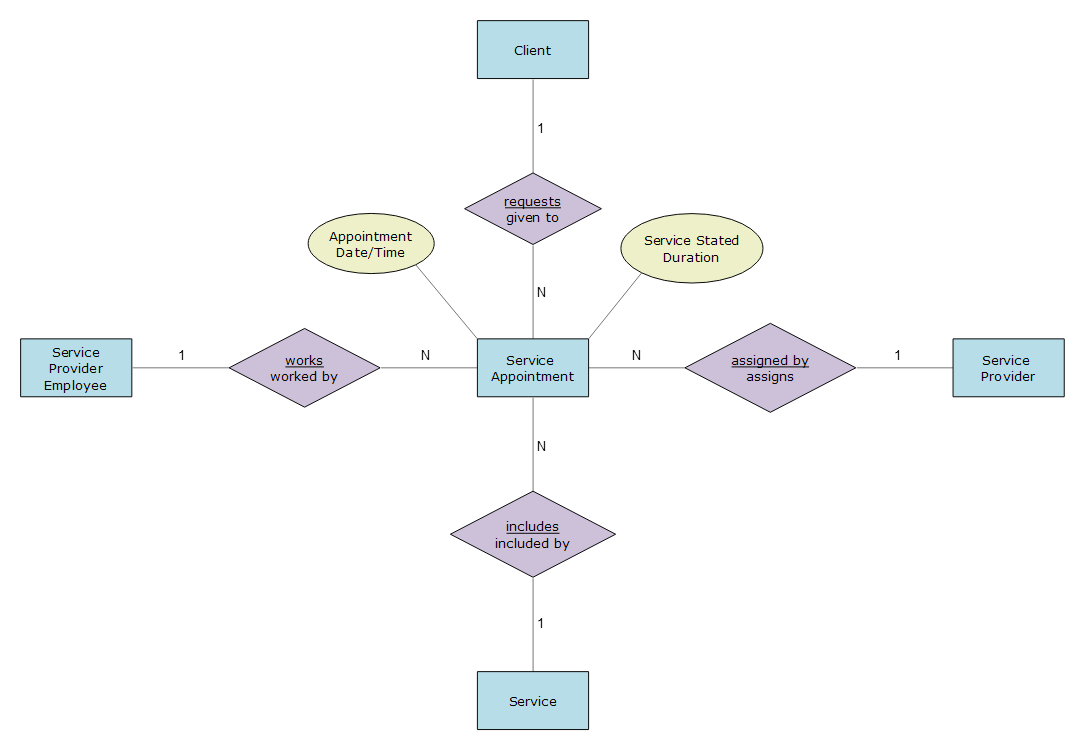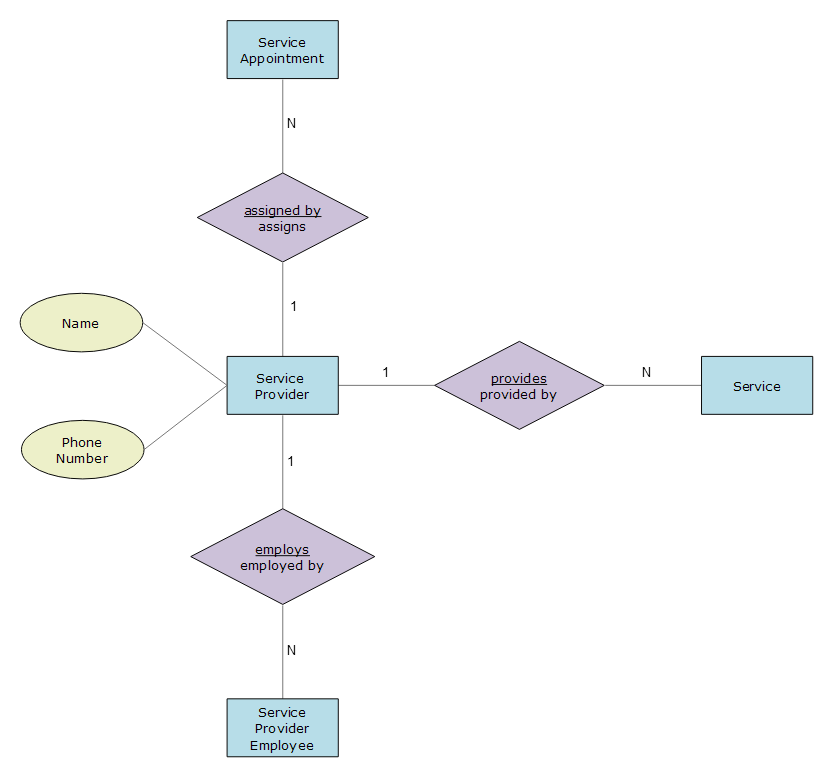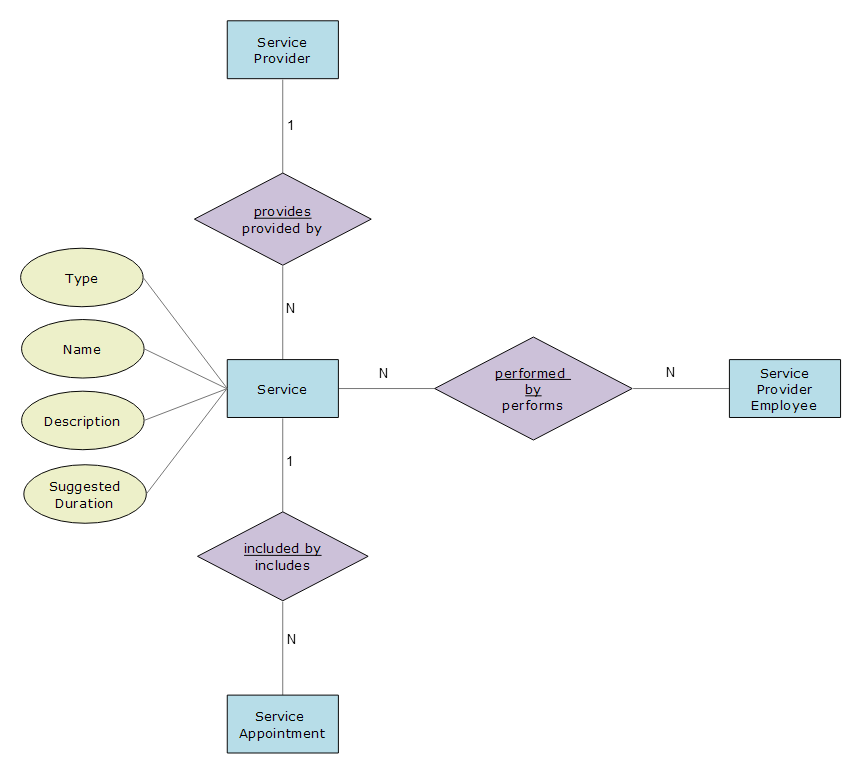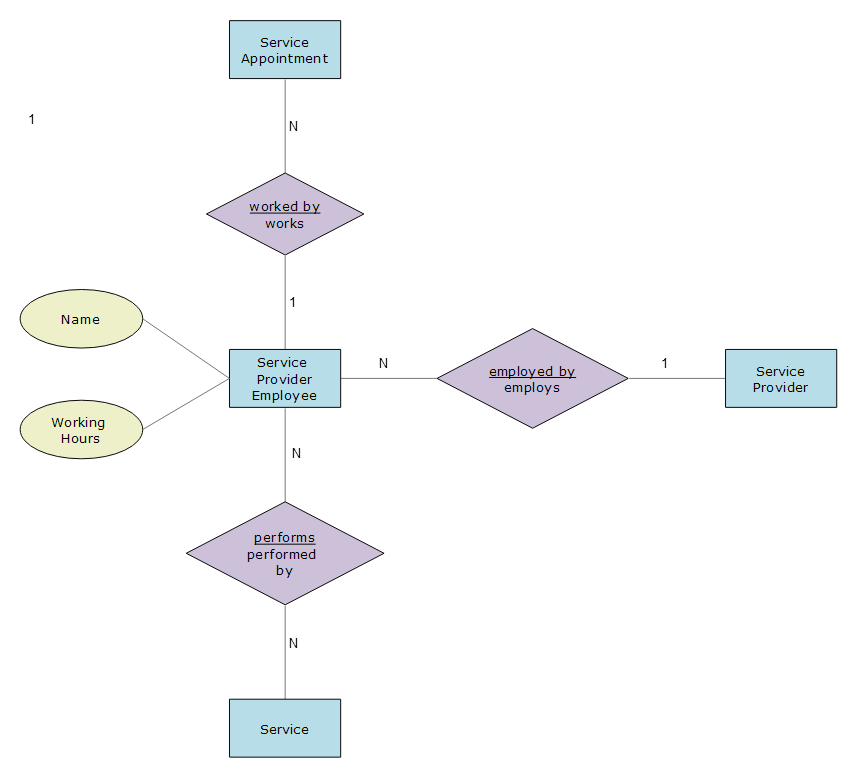Cassandra Conceptual Data Modeling

The task of a data modeler is to create order out of chaos without excessively distorting the truth. The finished product should be a data model that describes the structure, manipulation and integrity aspects of the data to be stored. To properly create a data model, the modeler will transform said chaos through three distinct stages. The first is a Conceptual Data Model, then a Logical Data Model, and lastly, a Physical Data Model. This post will cover only the first data model, Conceptual. There will be following posts on the Logical and Physical data models. It will also walk through the creation of a full blown conceptual data model for a service scheduling application to be built with a Cassandra backend.
Conceptual Data Model
Conceptual data models describe the semantics of the scope of the data. This type of model is a map of concepts, their relationships and constraints. It first involves creating entity classes with characteristic attributes. Then relationship assertions are created about associations between entity classes. If any constraints are present on the relationships, then those are defined as well.
For example, a Person could be categorized as an entity class. That generic class of Person could have characteristic attributes of name, gender, and age. We might then establish that a Person could have a relationship to another person. That relationship might be via genealogy or marriage. This is the beginning of a conceptual data model. Note that it has nothing to do specifically with a database. Rather, it’s just a conceptual schema, also known as an entity-relationship diagram.
Diagramming Conceptual Data Models
Conceptual modeling was developed by Peter Chen in a paper written in 1976. In part of his paper, Chen described which graphical representations to use for entities, relationships, and attributes. From those representations, we have the basis of how to graphically map out conceptual relationships. In Chen notation, as it is referred to, an entity is represented by a rectangle, a relationship by a diamond, and an attribute by an oval.
Recall the above examples of a Person is a parent/child to another Person, or a Person is married to another Person. The following two drawings show those conceptual data models in Chen notation:


The above diagrams show a couple different things. First, by reading it from left to right, you see that a Person is a parent to multiple or no children, indicated by the N above the relationship line. And reading it from right to left, a Person is a child of two and only two parents, indicated by the 2 above the relationship line. The second diagram shows that a person can be married to one and only one person. Also notice that the relationship can also have attributes, as the Birth Date and Marriage Date indicates.
These are the basic notational shapes for building Conceptual Data Models with the Chen Notation.
Conceptual Data Model for Cassandra
To build a Conceptual Data Model for Cassandra, we should have a good subject to model. This series of blog posts will focus on a single application. That is the ability to schedule an appointment for a service. For this application, we will need to define what all the objects, attributes, and relationships that are present around scheduling an appointment.
The first part is a person, the client, who needs to schedule an appointment for a service. The second part will be the service that is being scheduled. The third will be the service provider. The fourth will be the employees of the provider actually doing the service. We’ll keep it just this simple at first and then build upon it in the future.
Client
The Client is an entity that will need to have:
-
Name
-
Phone Number
-
Gender
-
Can request multiple Service Appointments

Service Appointment
The Service Appointment is a relationship that will need to have:
-
Appointment Date/Time
-
Service Stated Duration
-
Can be given to a single Client
-
Can be assigned by a single Service Provider
-
Can include a single Service
-
Can be worked by a single Service Provider Employee

Service Provider
The Service Provider is an entity that will need to have:
-
Name
-
Phone Number
-
Can assign multiple Service Appointments
-
Can provide multiple Services
-
Can employ multiple Service Provider Employees

Services
The Services that are available for scheduling is an entity that will need to have:
-
Service Type
-
Service Name
-
Service Description
-
Service Suggested Duration
-
Can be provided by a single Service Provider
-
Can be performed by multiple Service Provider Employees
-
Can be included in multiple Service Appointments

Service Provider Employees
The Employees of the Service Provider is an entity that will need to have:
-
Employee Name
-
Available Working Hours
-
Can be employed by a single Service Provider
-
Can perform to multiple Services
-
Can work multiple Service Appointments

Final Conceptual Model

Summary
This post covered the basics of what a conceptual data model entails, how to diagram one, and showed an in-depth example of creating one. This should give you a good foundation to build upon. Please check back soon, as I continue this path of creating the next steps in this data model, the Logical and Physical. Please check back soon, as I continue this path of creating the next steps in this data model, the Logical and Physical.